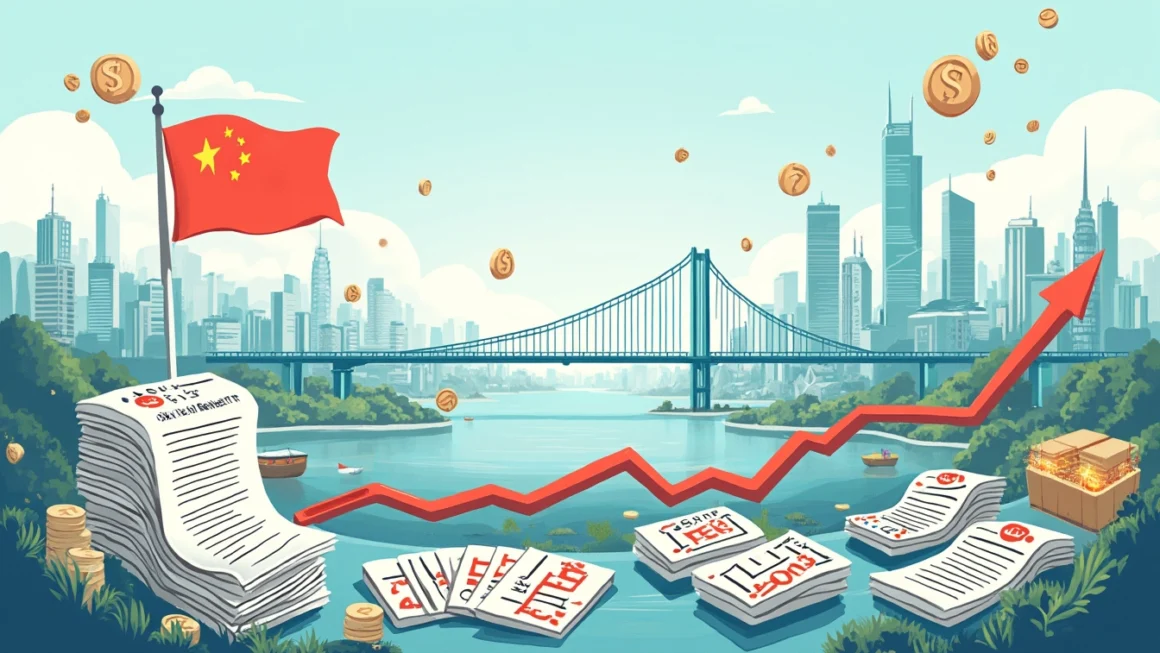In a bold move to address mounting financial pressures, China has unveiled an ambitious debt swap program aimed at alleviating the burden on local governments. This strategic initiative comes at a crucial time as the world’s second-largest economy grapples with economic headwinds and ongoing trade tensions with the United States.
Understanding China’s Debt Swap Program
Table of Contents
The newly announced debt swap program is designed to convert a significant portion of high-interest, short-term debt held by local governments into longer-term, lower-interest bonds. This financial maneuver is expected to provide much-needed breathing room for regional authorities struggling with debt repayments and fiscal constraints.
Key Features of the Debt Swap:
- Conversion of short-term liabilities into long-term bonds
- Reduction in interest rates to ease repayment burdens
- Extended maturity periods to improve cash flow management
- Central government backing to enhance investor confidence
By implementing this program, Beijing aims to stabilize local government finances and prevent potential defaults that could ripple through the broader economy. This proactive approach demonstrates China’s commitment to maintaining economic stability in the face of both domestic and international challenges.
The Economic Context
China’s decision to launch this massive debt swap comes against a backdrop of slowing economic growth and increasing financial pressures on local governments. These regional authorities have long relied on debt-fueled investments to drive economic expansion, resulting in a substantial accumulation of liabilities over time.
Factors Contributing to Local Government Debt:
- Ambitious infrastructure projects
- Real estate market volatility
- Revenue shortfalls due to economic slowdown
- Increased social welfare expenditures
The central government’s intervention through this debt swap program is a clear acknowledgment of the severity of the situation and the need for decisive action to prevent a potential crisis.
Implications for China’s Economy
The debt swap initiative is expected to have far-reaching implications for China’s economic landscape. By alleviating the immediate financial pressures on local governments, the program could pave the way for more sustainable growth and development strategies.
Potential Benefits:
- Improved fiscal stability at the local level
- Enhanced investor confidence in government bonds
- Reduced risk of systemic financial shocks
- Greater flexibility for economic stimulus measures
However, critics argue that while the debt swap provides short-term relief, it does not address the underlying structural issues that have led to the accumulation of debt in the first place. There are concerns that without fundamental reforms, local governments may continue to face financial challenges in the long run.
International Implications and Trade Dynamics
The timing of China’s debt swap program is particularly significant given the ongoing trade tensions with the United States. As both nations continue to navigate a complex economic relationship, China’s efforts to stabilize its domestic financial situation could have implications for global trade dynamics.
By strengthening its economic foundations, China may be better positioned to withstand external pressures and negotiate from a position of strength in future trade talks. This financial maneuver could be seen as part of a broader strategy to enhance China’s economic resilience in an increasingly uncertain global environment.
In the realm of international trade and economic cooperation, tools like automation platforms are becoming increasingly important for businesses navigating complex global markets. These technologies can help streamline operations and improve efficiency in cross-border transactions.
Looking Ahead: Challenges and Opportunities
While the debt swap program represents a significant step towards addressing local government debt issues, it is clear that China faces both challenges and opportunities in the coming years. The success of this initiative will largely depend on its implementation and the broader economic reforms that accompany it.
Key Areas to Watch:
- Local government financial management practices
- Reforms in the real estate and infrastructure sectors
- Developments in China-US trade relations
- Global economic recovery post-pandemic
As China continues to navigate these complex economic waters, the world will be watching closely. The outcomes of this debt swap program and related economic policies could have significant implications not only for China but for the global economy as a whole.
Conclusion
China’s unveiling of a massive debt swap program marks a crucial moment in its ongoing efforts to manage economic challenges and maintain stability. By addressing the pressing issue of local government debt, Beijing is taking proactive steps to shore up its financial system and position itself for sustainable growth.
As the program unfolds, it will be essential to monitor its impact on China’s economy, its relationships with international partners, and its ability to navigate the complex landscape of global trade. The success of this initiative could play a pivotal role in shaping China’s economic trajectory in the years to come.




